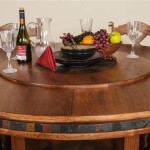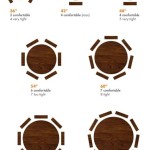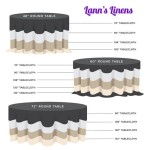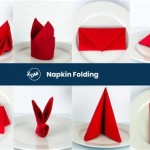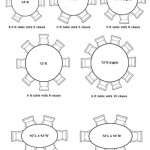Do Placemats Go Over Table Runners? Exploring Table Setting Etiquette
The question of whether placemats should be placed over a table runner is a common one when setting a table. The answer isn't always straightforward, as it depends on several factors, including the formality of the occasion, the style of the table runner and placemats being used, and personal preference. Understanding the purpose of both table runners and placemats is crucial in making an informed decision. This article aims to delve into the nuances of table setting etiquette and provide guidance on how to best incorporate these elements for an aesthetically pleasing and functional dining experience.
Table runners and placemats, while both serving a decorative and protective purpose on a table, have distinct roles. A table runner typically runs lengthwise down the center of a table, often extending slightly over the edges. It is primarily intended as a decorative element, adding color, texture, and visual interest to the table setting. Table runners can be used on bare tables or layered over a tablecloth. Placemats, on the other hand, are individual mats placed under each diner's setting. Their primary function is to protect the table from spills, heat damage, and scratches caused by plates and cutlery. They also define each guest's personal space at the table.
Historically, both table runners and placemats evolved from different needs. Tablecloths were once the standard for formal dining, protecting the table from the rigors of meal service. As dining habits became more casual and tables became more decorative in their own right, table runners emerged as a less formal, more versatile alternative. Similarly, placemats offered a practical yet stylish way to protect the table at individual place settings, moving away from the need to cover the entire table surface. The modern use of both items reflects a blend of functionality and aesthetic consideration, allowing for creative expression in setting a table.
Assessing Formality and Occasion
The formality of the occasion is a primary factor in deciding whether to place placemats over a table runner. For formal events, such as weddings, banquets, or upscale dinner parties, a full tablecloth is often the preferred choice. In such cases, a table runner might be layered on top of the tablecloth for added visual appeal. Placemats, in this scenario, are typically not used, as the tablecloth and runner provide ample protection and a more unified, elegant look. The focus is on a cohesive and refined presentation, where individual placemats might detract from the overall formality.
For semi-formal occasions, such as holiday dinners or special family gatherings, the use of a table runner is common. The decision to add placemats then depends on the desired level of formality and the style of the linens. If the table runner is particularly elaborate or acts as a centerpiece in itself, placing placemats over it might obscure its design and diminish its impact. In this instance, it may be preferable to use only the table runner, perhaps with chargers under the plates for added protection and visual interest.
For casual settings, such as everyday family meals or informal get-togethers, the choice between using a table runner with or without placemats is more flexible. Personal preference and the specific aesthetic of the table setting play a larger role. A table runner can add a touch of style to a bare table, while placemats provide practical protection against spills and stains. In this context, it is perfectly acceptable to place placemats over a table runner, especially if the runner is simple and unobtrusive.
Considering Style and Material Compatibility
The style and material of both the table runner and placemats influence whether they should be used together and, if so, in what configuration. A heavily textured or intricately patterned table runner may not pair well with placemats that compete for visual attention. In this case, simpler, more understated placemats, or even foregoing placemats altogether, might be the better choice. The aim is to achieve a balanced and harmonious look, where each element complements rather than clashes with the others.
The materials of the table runner and placemats also need to be considered. For instance, a delicate lace table runner might be best complemented by simple linen or cotton placemats. Conversely, a rustic burlap table runner might pair well with woven placemats made from natural materials like jute or seagrass. The key is to choose materials that harmonize in terms of texture, color, and overall aesthetic. Mixing materials that are too dissimilar can create a disjointed and visually jarring effect.
Color coordination is another important aspect of style compatibility. If the table runner features bold colors or intricate patterns, it is often best to choose placemats in neutral tones or complementary colors. Conversely, if the table runner is a neutral color, the placemats can be used to add pops of color or introduce interesting patterns. The goal is to create a visually appealing and balanced color scheme that enhances the overall table setting.
Addressing Practicality and Functionality
Beyond aesthetics, the practical considerations of using placemats over a table runner involve functionality and ease of use. Placemats are primarily designed to protect the table surface from spills and stains around each individual place setting. If the table runner is made of a delicate or difficult-to-clean material, placing placemats over it can offer an additional layer of protection. This is particularly useful for households with children or for events where spills are more likely to occur.
The size and shape of both the table runner and placemats should also be taken into account. Placemats should be appropriately sized to accommodate the dinner plate, cutlery, and glassware without overlapping the table runner excessively. If the placemats are too large, they might obscure the runner and create a cluttered look. Conversely, if the placemats are too small, they may not provide adequate protection for the table surface. The proportions of the placemats and table runner should be carefully considered to ensure a balanced and functional table setting.
The ease of maintenance is another practical consideration. Table runners and placemats should be made of materials that are easy to clean and maintain. If the table runner is prone to staining or requires special cleaning, using placemats can help to minimize the need for frequent washing or dry cleaning. Similarly, choosing placemats that are stain-resistant and easy to wipe clean can simplify the after-meal cleanup process. Prioritizing practicality and functionality can make the dining experience more enjoyable and less stressful.
Ultimately, the decision of whether to place placemats over a table runner is a matter of personal preference, guided by the specific context of the event, the style of the linens, and practical considerations. There are no hard and fast rules, but rather guidelines to help create a table setting that is both visually appealing and functionally effective. By carefully considering these factors, individuals can confidently create table settings that reflect their personal style and enhance the dining experience for themselves and their guests.

5 Ways To Decorate A Table With Runner Pottery Barn

5 Ways To Decorate A Table With Runner Pottery Barn
How To Set A Table Homegoods Photoshoot Reveal Four Generations One Roof Blog

How To Use Placemats Ultimate Style Guide French Affair

Thanksgiving Table Runners How To Style A Runner

Beginner Sewing Project Diy Placemats Table Runner Reversible

Beginner Sewing Project Diy Placemats Table Runner Reversible

Table Runners And Placemats

Table Runners And Placemats Guide Crate Barrel

Plaid Table Runners Or Placemats Ltd Commodities
Related Posts

